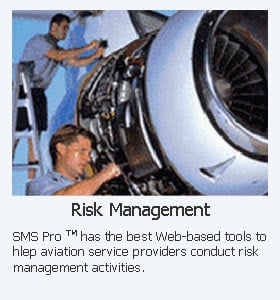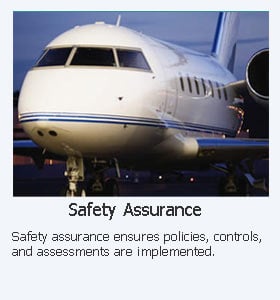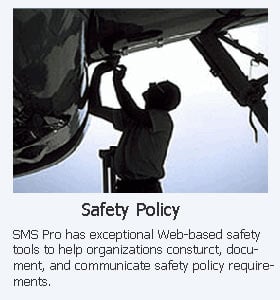What Are the Safety Management System Databases?

In early 2007, when we started designing and developing SMS Pro, I was mildly surprised that many aviation safety managers called a Web application to manage aviation safety events a "safety management system" (SMS) database.
I'm an IT guy, and when I think of a database, I'm thinking about Oracle, SQL Server, MS Access, etc.
I believe the confusion comes from pilots who are used to dealing with MS Access databases. MS Access has the ability to create forms that feed and access data from the internal database.
Therefore, I can understand how aviation safety managers, as well as many other professionals in other industries, can confuse the term "database" with "Web application."
A Web application has forms that can be accessed via the Web. These forms are tied to a centralized database, such as Oracle or SQL Server, two of the most popular enterprise-grade database programs. In this article, we are going to call the Aviation Safety Management System Database simply "SMS Database."
We will highlight the various benefits of using an SMS database at airlines, airports, flight schools, and aviation maintenance organizations. These benefits will include:
- Safety Benefits;
- Business Benefits; and
- Unanticipated Benefits.
Related Aviation SMS Database Articles
- 5 Most Important Things to Know Before Buying Aviation SMS Database
- How Spreadsheets Not EASA Compliant Aviation Safety Reporting Database
- How to Choose the Best Aviation Safety Database Software
Why Do We Need an SMS Database?

In 2006, the International Civil Aviation Organization (ICAO) mandated that aviation service providers implement formal safety management systems. These operators include:
- Airlines;
- Airports or Aerodromes;
- Maintenance Organizations; and
- Air Traffic Control.
ICAO also laid out guidelines for the development of an aviation SMS program, called Document 9859. We use Doc 9859 as our bible for SMS database design and development.
ICAO's minimum guidelines for an aviation SMS implementation require that the system:
- Identifies safety hazards.
- Ensures that remedial action necessary to maintain an acceptable level of safety is implemented.
- Provides for continuous monitoring and regular assessment of the safety level achieved.
- Aims to make continuous improvement to the overall level of safety.
This is a tall order to manage all this data using paper, MS Excel, PowerPoint, and Word. One needs an aviation SMS database and preferably one that isn't developed in-house unless your aviation safety department has a large budget. The more full-featured aviation SMS database programs cost as much as two million dollars to develop, and then there are maintenance and support costs.
The benefits of an airline or airport having an aviation SMS database are manifold, as outlined in the introduction. They include:
1. Safety Benefits of an SMS Database Program

Managing aviation SMS programs is akin to managing quality management systems or even environmental management systems. There are many overlapping requirements, so if you are familiar with quality or environmental management systems, you should have no surprises.
Imagine that your aviation SMS implementation is taking a quality management style approach to managing or controlling risk to aviation assets, which include:
- People;
- Equipment;
- Reputation; and
- Environment.
For smaller operators, such as airports and on-demand charter operators, the aviation SMS database forms the core of all of the company's safety initiatives, including these activities:
These four activities are also familiarly known as the Four Pillars.
SMS databases have several safety benefits, including:
- Improves safety by enhancing communication;
- Improves morale, as SMS processes are streamlined;
- Reduces worry that best industry practices are not incorporated; and
- Speeds up the entire safety management and risk management processes.
Related Aviation SMS Database Articles
- What Is an Aviation Safety Database
- 7 Signs You Need an Aviation Safety Management (SMS) Database
- Pros and Cons of In-House SMS Database and Off-the-Shelf-Solutions (COTS)
2. Business Benefits of an SMS Database Program

The business benefits of an aviation SMS database are:
- Saves money managing data, reports, and interfacing with outside systems;
- Protects assets (people & equipment);
- Assist in meeting regulatory requirements;
- Provides a structured approach to managing risk; and
- Reduces risk by streamlining continuous improvement to operations.
Aviation service providers are in the business of making money. Most forward-thinking managers today realize that business benefits significantly outweigh additional costs when implementing their aviation SMS. Furthermore, most aviation service providers realize within five years that these SMS programs require more than paper and MS Excel.
The real business benefit from the aviation safety management system database comes immediately before and during an audit. This is typically the time when managers are running around with their hair on fire trying to "pull it all together." With modern, industry-accepted SMS databases, these managers can relax and let the system do the heavy lifting.
3. Unanticipated Benefits of an SMS Database Program
Besides the business and safety benefits of the SMS database, companies realize some unanticipated benefits fairly quickly. These include:
- Unsolicited insurance premium reductions;
- Greater employee involvement with safety, security, quality, compliance, and environmental issues;
- Reduction of staff turnover;
- Useful safety information from risk assessments;
- Reduction in costs associated with corporate knowledge leaving the company; and
- More operational suggestions for improvement from staff.
Related Aviation SMS Database Articles
- When to Design Your Own Aviation SMS Database
- Tips Writing SMS Manuals With Aviation Safety Database Solutions
- Why EASA Aviation Service Providers Require Safety Reporting Database
Final Thoughts on Aviation SMS Database
If you are reading this post, it is probable that you have already implemented an aviation SMS. Getting the budget to save the safety team time and money is a typical struggle for most airline and airport safety teams.
The lack of sufficient budget to perform required safety management activities is the single most prominent indicator that the safety team lacks top management support for the SMS implementation. There is no reason for this today, as smaller companies can typically acquire industry-accepted SMS database programs more cheaply than their phone bills.
Last updated in August 2025.






